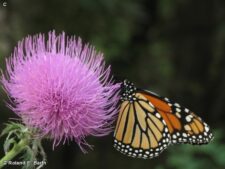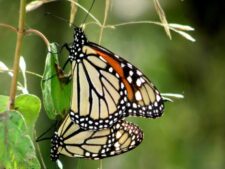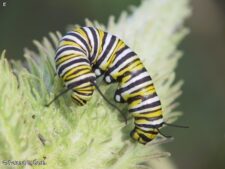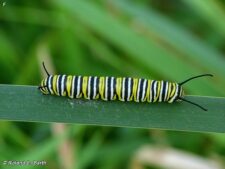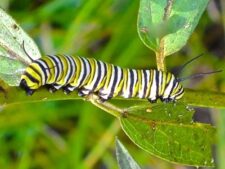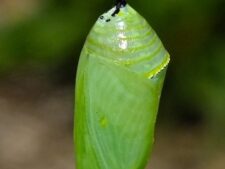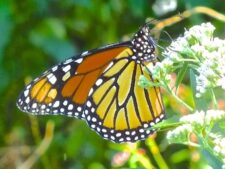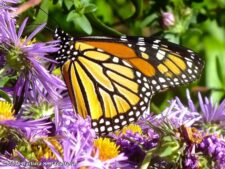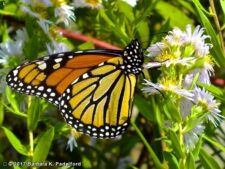
This large, colorful butterfly has a wingspan of 3 1/2 – 4 inches. It is bright cinnamon-orange dorsally with black veins and margins and yellow and white spots on the wing borders. Ventrally, the forewing is orange basally and black and tan with white spots near the tip. The hindwing is tan with black veins. It is similar to the smaller Viceroy which mimics it, but lacks the black crossband on the hindwing. The caterpillar is black, yellow and white striped, and when mature is about 2 inches in length. It has a pair of long, black filaments projecting out near the head and rear of the abdomen. The chrysalis is about 7/8 inch and jade-green with metallic gold markings.
This butterfly is commonly seen nectaring at flowers from spring through fall. It has a strong flight and can be seen migrating, sometimes very high, in September. Occasionally, during migration large numbers will gather to roost overnight in trees.
This is the only butterfly in North America that migrates from north to south as birds do. The last brood of summer migrates south to spend the winter in the mountains of central Mexico. In early spring they move north and breed along the way. Their offspring continue north and also breed. Finally by summer, the next generation has repopulated much of the continent. The larvae feed on toxic milkweeds which makes the butterflies distasteful to birds, thereby providing some protection from predators.
Disclaimer: The content of NatureSearch is provided by dedicated volunteer Naturalists of Fontenelle Forest who strive to provide the most accurate information available. Contributors of the images retain their copyrights. The point of contact for this page is: Babs Padelford.


